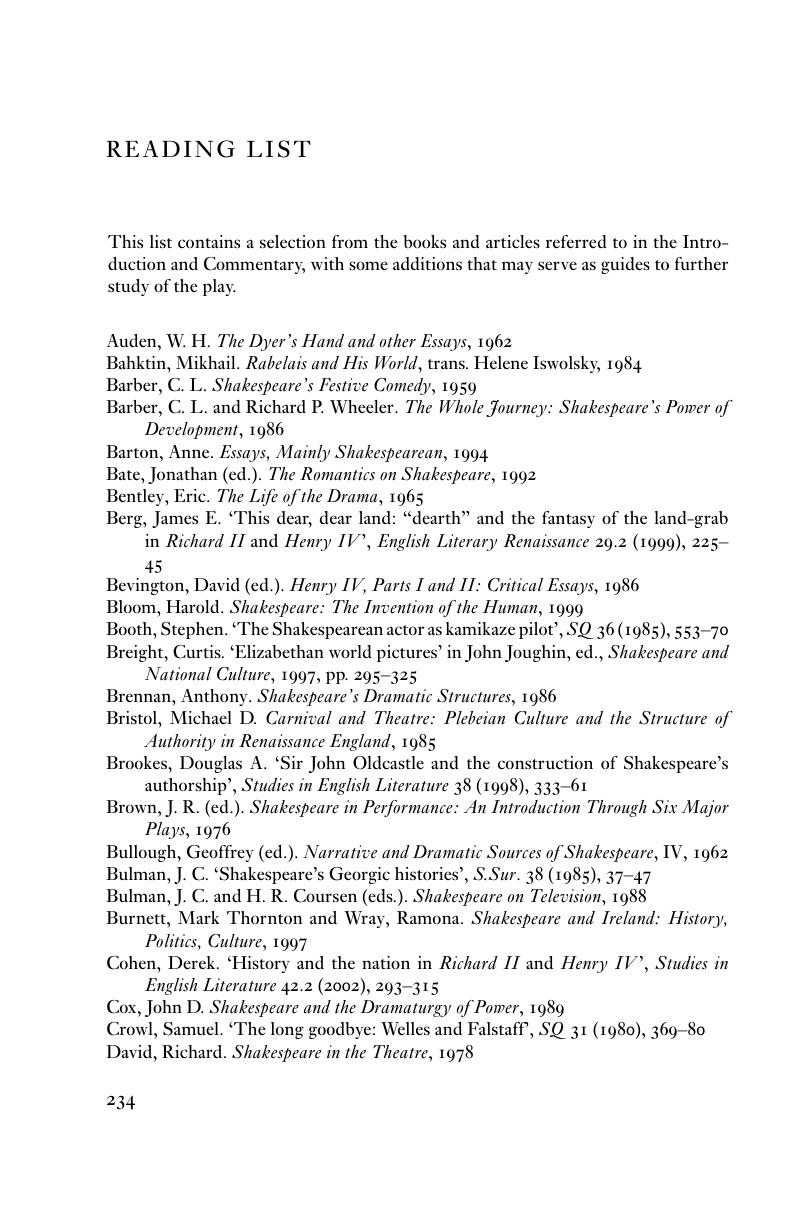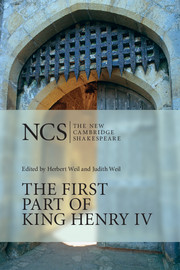Book contents
- The New Cambridge Shakespeare
- The New Cambridge Shakespeare
- The First Part of King Henry IV
- Copyright page
- Contents
- Illustrations
- Preface
- Abbreviations and Conventions
- Introduction
- Note on the text
- The First Part of King Henry IV
- Textual analysis
- Appendix: Shakespeare and Holinshed
- Reading List
- References
Reading List
Published online by Cambridge University Press: 16 August 2019
- The New Cambridge Shakespeare
- The New Cambridge Shakespeare
- The First Part of King Henry IV
- Copyright page
- Contents
- Illustrations
- Preface
- Abbreviations and Conventions
- Introduction
- Note on the text
- The First Part of King Henry IV
- Textual analysis
- Appendix: Shakespeare and Holinshed
- Reading List
- References
Summary

- Type
- Chapter
- Information
- The First Part of King Henry IV , pp. 234 - 237Publisher: Cambridge University PressPrint publication year: 2007

